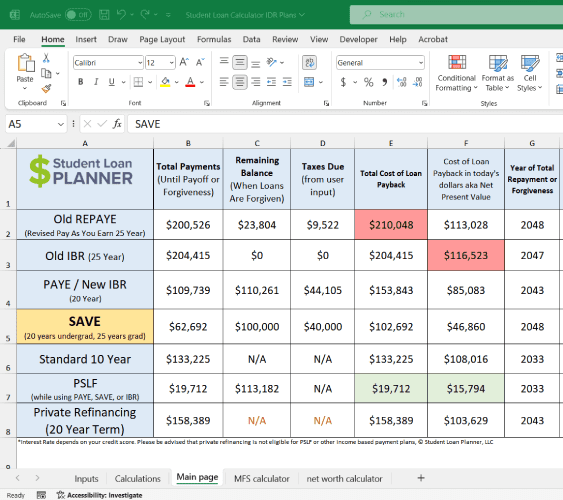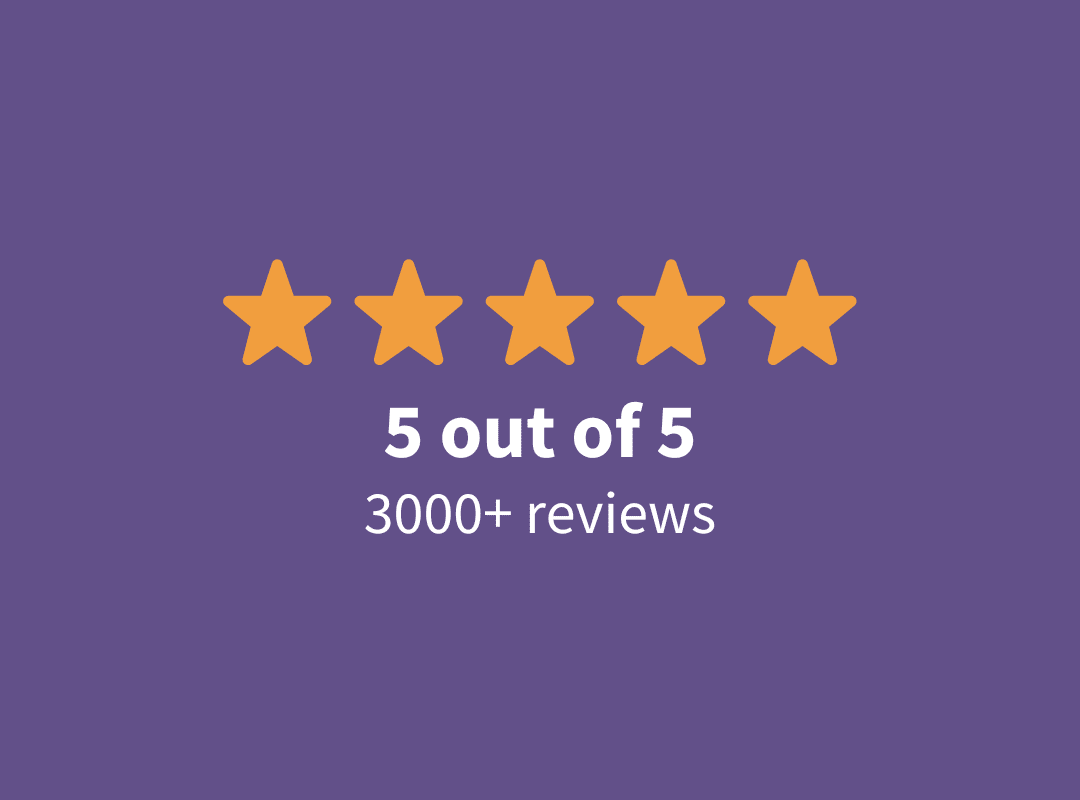
If you have federal student loans, there’s a good chance you’ve dealt with Nelnet at some point. As of September 30, 2023, Nelnet is the servicer for $529.3 billion of federal student loans, according to Federal Student Loan Portfolio data. Based on the Federal Student Aid data, Nelnet services the largest amount of federal loans compared to other loan servicers.
How should federal student loan borrowers approach their Nelnet student loans now that the payment pause/forbearance period has ended? For many, Nelnet student loan forgiveness could provide the perfect repayment strategy.
What is Nelnet, and what Nelnet student loan forgiveness programs are available? Here's what you need to know about all your forgiveness options.
What is Nelnet?
Nelnet is one of the five student loan servicers used by the government. Federal borrowers are assigned a loan servicer, who handles loan payments and other services for borrowers.
Located in Lincoln, Nebraska, Nelnet is one of the largest student loan servicers. In 2018, Nelnet acquired Great Lakes Educational Loan Services for $150 million. Their combination turned Nelnet into a massive megaservicer.
Get Started With Our New IDR Calculator

How to qualify for Nelnet student loan forgiveness
Nelnet borrowers can qualify for Nelnet student loan forgiveness through federal programs from the U.S. Department of Education. Here are the forgiveness or cancellation options that are available for federal borrowers.
Public Service Loan Forgiveness (PSLF)
The Public Service Loan Forgiveness program (PSLF) is one way for borrowers to get their student loan debt forgiven. To qualify for PSLF, borrowers have to meet specific criteria and eligibility requirements, which include:
- Work full-time for a government agency or qualifying nonprofit organization.
- Have Direct Loans (or consolidate your loans with a Direct Consolidation Loan).
- Repay your student loans on an income-driven repayment (IDR) plan.
- Make 120 qualifying monthly student loan payments.
If you’re planning to pursue PSLF, you’ll want to submit an Employment Certification Form (ECF) to the MOHELA address listed on the form. Once you do this and your employment qualifications are confirmed, your student loans will be transferred to MOHELA, the official loan servicer of the PSLF program.
Nelnet may sometimes suggest that borrowers keep their loans with them while pursuing PSLF, but this isn't recommended. To ensure that your qualifying payments for future loan forgiveness are tracked accurately, it is recommended that you get your employment verified and your loans transferred to MOHELA. You’ll be able to track your payment count for future loan forgiveness of your remaining balance.
Once they reach 120 qualifying payments, borrowers can apply for PSLF by submitting the Public Service Loan Forgiveness (PSLF): Application For Forgiveness. If approved, any remaining federal student loan debt will be forgiven tax-free.
Temporary Expanded Public Service Loan Forgiveness (TEPSLF)
If you are considering applying for TEPSLF, it is important to check whether you qualify for the IDR waiver before proceeding. This is especially important if you did not apply for the PSLF waiver previously. If you are eligible for the IDR waiver, it could be a more viable option for you than TEPSLF.
However, if you're not eligible for the IDR waiver, then applying for TEPSLF may be the next best option. The government saw that PSLF guidelines weren’t initially clear, so they created Temporary Expanded PSLF (TEPSLF) to provide additional student debt relief.
TEPSLF gives borrowers a second chance to qualify for loan forgiveness. To take advantage of this TEPSLF opportunity, you must have:
- Submitted a PSLF application and been denied because some or all payments weren’t made under a qualifying repayment plan.
- Had at least 10 years of full-time employment approved by MOHELA.
- Met requirements for the last 12 months worth of payments before applying for TEPSLF, including the last payment before applying (payments must be at least as much as they would have been paid under an income-driven repayment plan).
- Made 120 qualifying payments under TEPSLF standards while working full-time for a qualifying employer.
If you were denied PSLF because of a technicality or issue with your student loan repayment, it's worth looking into TEPSLF to see if you qualify. Not all loans qualify for TEPSLF, so be sure to look at all of the stipulations before pursuing this option. If you aren't sure, book a student loan consultation with one of our student loan experts for personalized help.

Income-driven repayment (IDR) forgiveness
If you don’t qualify for PSLF, there’s another way to get a portion of your student loan debt forgiven. IDR forgiveness wipes out any remaining student loan balance if you're on an IDR plan and making payments for 20 to 25 years (depending on the specific IDR plan). Payments are determined by family size and income.
There are four IDR plans borrowers can choose from:
- Pay As You Earn (PAYE).
- Saving on a Valuable Education (SAVE) (which replaced Revised Pay As You Earn or REPAYE).
- Income-Based Repayment (IBR).
- Income-Contingent Repayment (ICR).
Unlike PSLF, you may end up paying taxes on your forgiven loans. According to the IRS, any forgiven student loan debt is considered taxable income. However, due to legislation student loan forgiveness and discharge is tax-free until 2025. What comes after is unknown.
Regardless of what happens, the good news is that you have considerable time to plan and save money to cover this expense. And in the meantime, you get to enjoy lower monthly payment amounts, which can make a difference in your budgeting and savings goals, especially with the new SAVE Plan. Visit StudentAid.gov to submit an IDR request.
Teacher loan forgiveness
Teachers with loans through Nelnet can pursue teacher loan forgiveness. Teachers may qualify to have a maximum of $17,500 or $5,000 in student loans forgiven, depending on the subject area taught, if specific requirements are met.
To qualify, you need to meet exact requirements such as:
- Full-time employment as a highly qualified teacher for five consecutive years, with at least one year after the 1997–98 academic year.
- Five completed academic years in a qualifying low-income school or educational service agency.
- Borrowed qualifying loans before the end of your five academic years of teaching.
This option should be weighed against PSLF since your total amount of debt may impact which forgiveness program is best for you.
Related: Teacher Loan Forgiveness vs. Public Service Loan Forgiveness for Teachers: Which is Better?
Borrower defense to repayment
According to the Higher Education Act, if your college or university misled you or engaged in illegal activity, you can seek out loan forgiveness.
Historically, this forgiveness option had been rarely used. However, in 2017 the Department of Education reviewed its borrower defense policies and announced new guidance.
As of the end of 2020, 61,511 borrower defense applications have been approved out of 338,062 total applications received. In June 2022, the settlement for Sweet v. Cardona was approved, which affects borrowers who applied for borrower defense to repayment on or before November 15, 2022.
In September 2023, the Biden Administration announced $37 million in borrower defense discharges for more than 1,200 students who previously attended the University of Phoenix.
Learn more about borrower defense loan forgiveness at StudentAid.gov.
How to qualify for Nelnet student loan discharge
Joining a forgiveness program isn't the only way to get your Nelnet student loans canceled. There are a variety of situations in which you may qualify for a discharge of your federal student loan. Here are a few prominent examples:
- Death discharge. Federal student loans are discharged if the student passes. Parent PLUS Loans are discharged if either the student OR the parent dies before the loans are fully repaid.
- Total and Permanent Disability Discharge (TPD). If you can provide documentation from a physician that you've become fully and permanently disabled, your federal loans could be canceled. All supporting documentation should be sent to Nelnet as they are the exclusive TPD discharge servicer.
- Closed school discharge. If your school closed down while you were still enrolled or shortly after you withdrew, you may be eligible for a discharge of your student loans.
- False certification discharge. If your school falsely certified your eligibility to receive federal student loans, those loans may qualify to be discharged.
A bankruptcy discharge is technically possible as well, but it's certainly not automatic. To have your student loans discharged in bankruptcy, you'll need to prove that they're causing you “undue hardship.” Learn more about student loan discharge in bankruptcy.
Should you refinance your Nelnet student loans?
Depending on your specific loan situation, refinancing your Nelnet student loans may be a better repayment option. With refinancing, a lender pays off your existing loans and you receive a new loan. Your new loan will have new terms, a new interest rate and new repayment options.
If you can secure a lower interest rate, you could save thousands of dollars in interest payments over the life of your loan. You must have established credit or a cosigner (if applicable) to qualify for refinancing and get a low rate.
Refinancing will turn your federal student loans into private loans. You’ll lose access to federal protections like loan forgiveness, IDR plans, forbearance, and deferment options.
Private lenders may have options for borrowers facing hardship, but it’s not guaranteed. Make sure you won’t need access to any of the federal programs before moving forward with refinancing.
As a general rule, if you owe less than 1.5 times your income, you are a good candidate for refinancing. If your debt is higher than that, loan forgiveness makes more sense, especially if you could qualify for PSLF.
Nelnet now offers its own student loan refinancing product through its recently-launched subsidiary, Nelnet Bank. However, other lenders may offer better refinancing rates, terms or cash bonuses.
Tips for Nelnet customers
Federal loan servicers, including Nelnet, don’t have the best reputation for customer support. If you choose to stay with Nelnet as your loan servicer, make sure you are in the right repayment plan, file taxes correctly and stay vigilant with how Nelnet is handling your loans.
If your Nelnet student loans are in default, be sure to take the right steps to get back on track with repayment.
A student loan lawyer might be the best option if you need extra help handling your loan situation. Particularly if you feel you’ve been taken advantage of or if your rights as a borrower aren’t being upheld, hiring a student loan lawyer may be in your best interest.
Situations that might require the help of a student loan lawyer also include:
- Your student loans have been or are being mishandled.
- You’ve attempted loan rehabilitation, and it was handled incorrectly.
- Disputes over your loans require extra professional attention.
While their reputation is better than many other federal loan servicers, many borrowers still have complaints about Nelnet. Take advantage of Nelnet student loan forgiveness options if you qualify; otherwise, refinancing your Nelnet loans may be the best repayment option available.
Refinance student loans, get a bonus in 2024
| Lender Name | Lender | Offer | Learn more |
|---|---|---|---|

|
$500 Bonus
*Includes optional 0.25% Auto Pay discount. For 100k or more.
|
Fixed 5.24 - 9.99% APR*
Variable 6.24 - 9.99% APR*
|
|

|
$1,000 Bonus
For 100k or more. $300 for 50k to $99,999
|
Fixed 5.19 - 10.24% APPR
Variable 5.28 - 10.24% APR
|
|

|
$1,000 Bonus
For 100k or more. $200 for 50k to $99,999
|
Fixed 5.19 - 9.74% APR
Variable 5.99 - 9.74% APR
|
|

|
$1,050 Bonus
For 100k+, $300 for 50k to 99k.
|
Fixed 5.44 - 9.75% APR
Variable 5.49 - 9.95% APR
|
|

|
$1,275 Bonus
For 150k+, $300 to $575 for 50k to 149k.
|
Fixed 5.48 - 8.69% APR
Variable 5.28 - 8.99% APR
|
|

|
$1,250 Bonus
For 100k+, $350 for 50k to 100k. $100 for 5k to 50k
|
Fixed 5.48 - 10.98% APR
Variable 5.28 - 12.41% AR
|
Not sure what to do with your student loans?
Take our 11 question quiz to get a personalized recommendation for 2024 on whether you should pursue PSLF, Biden’s New IDR plan, or refinancing (including the one lender we think could give you the best rate).

I am not sure where to go, what to do, been getting letters and calls on student loan forgiveness, due to my school closing, I am on SSI, and recieved letter from direct loans they were going to garnish my income, i also recieved information this loan or dept of education can be filed as loan forgiveness, the ITT Tech school i attended, i have paperwork of civil law suit, what do i do to get this loan forgiveness, not only did my school close, and i an on social security disabilty, but i had worked in the public server. somewhere in there i am able to get this loan forgivness, need help and direction
Try applying for the closed school discharge (you’re generally only eligible if the school closed down before you were able to earn a degree)
https://studentaid.ed.gov/sa/sites/default/files/closed-school-loan-discharge-form.pdf
There’s also borrower defense to repayment but that’s harder to get. I would keep calling your servicer and ask them what you should do to get your ITT Tech loans forgiven.
Please call. I started a loan forgiveness through you guys (nelnet) and I thought it was done but now i have them taking my taxes. What do i do?
You need to call them back and get signed up for REPAYE
I have been teaching for 20 years in the largest school district in Ohio, I still owe over 40,000 dollars and can never get ahead, especially with my payment being almost 360 dollars a month. I wont get my loan pain off until I’m almost retired. What a disappointment that it will take me 40 years to pay my student loan back. There has got to be something I can do to help me get some of the loan forgiven. Help please!!!!!
There likely is something you can do. If you work for the school district, you probably qualify for PSLF. But there are other types of forgiveness and repayment solutions, too. I recommend you reach out to book a consult to get a custom analysis and repayment plan.